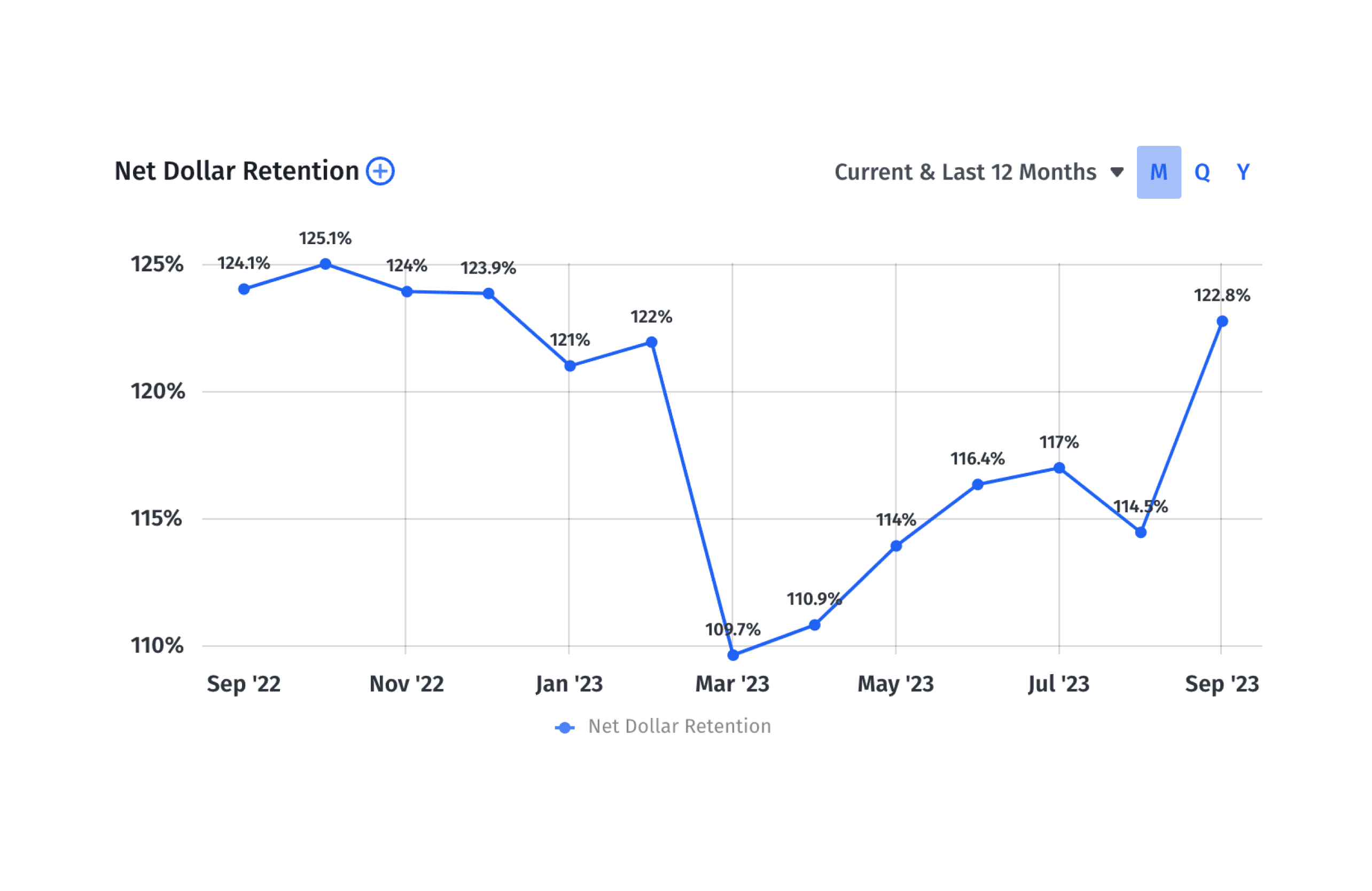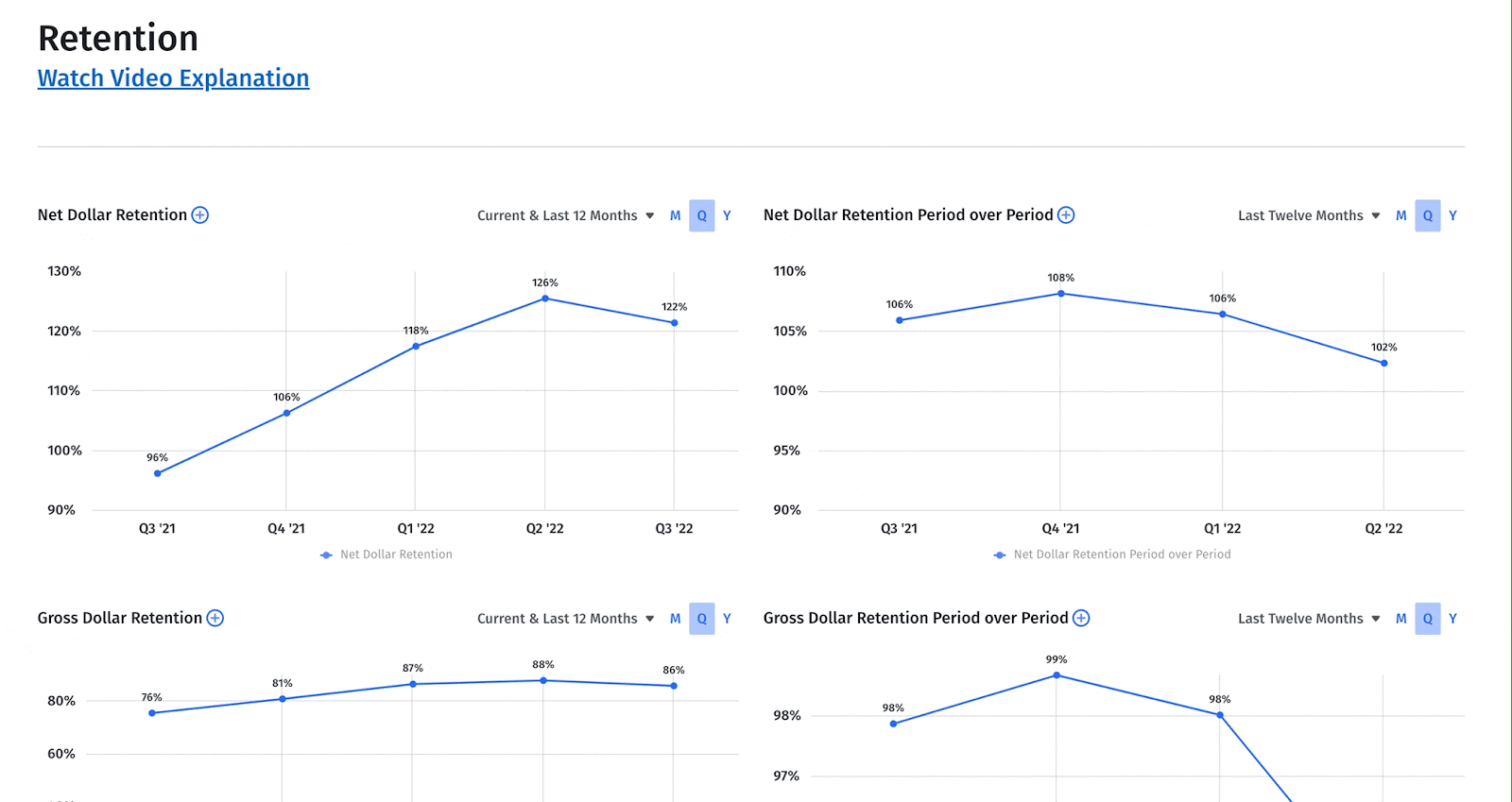How a SaaS Business Can Achieve Negative Churn
What Is Negative Churn?
Net negative churn (NNC) happens when the expansion revenue (from upsells, cross-sells, or price increases) from current customers exceeds the revenue lost from customers who have downgraded or churned. Negative churn, more commonly viewed as 100+% net revenue retention, is highly coveted in SaaS — it’s where the income from your active subscribers outpace the losses from churned users, so business continues to grow without adding new customers.

Categories
Net negative churn is essentially the other side of net revenue retention. Although both metrics have an inverse relationship, they focus on the same objective: How can companies maximize expansion revenue while minimizing customer churn?
Here’s why this matters: As explained by Ben Murray, The SaaS CFO, churn, often labeled the “SaaS killer,” is more than just losing customers from subscription cancellations. It’s a financial weight that hampers growth and limits operational agility.
Pouring resources into acquiring customers, only to see them leave before covering their acquisition costs, creates a damaging cycle for the business — you’ll end up absorbing the cost of new acquisitions and shouldering the losses from departed customers. Moreover, each dollar spent on ineffective sales and marketing could instead fuel innovation, product expansion, or entry into new markets.
To truly grasp negative churn, consider the economics that can make or break a SaaS business, starting with viewing churn as an outstanding debt that needs repayment.
Table of Contents
Five Strategies for Achieving Net Negative Churn
Net negative churn boosts business growth through greater customer lifetime value and promotes a sustainable business model that ensures longevity. There are numerous measures SaaS companies can take to achieve negative churn, and some of them are as follows:
1. Build a Land and Expand Growth Strategy
A “land and expand” growth strategy involves securing a customer through a small, initial subscription and growing the value of that account over time through upsells, cross-sells, or higher usage — all of which could help achieve net negative churn. By prioritizing customer relationships, you’re focusing on retaining your existing number of customers, which is more cost-effective than new customer acquisition.
Although this strategy involves a long game, the returns are worth it for any SaaS business. Moreover, a land and expand strategy makes it possible to keep up with changing customer preferences, so you can build a more sustainable stream of revenue growth by tailoring your product.
2. Incentivize Customer Referrals
Offer incentives to existing customers to refer your product to others. This approach could strengthen the relationships with existing customers (making them less likely to churn) and expand your customer base through word of mouth.
Some examples of customer referral incentives include offering discounts or credits toward the existing customer’s subscription for every referral that converts, such as a month of free service or a fixed amount of their current bill.
You could also recognize top referrers in community forums, newsletters, or on the website. Alternatively, consider giving tiered rewards based on the number of referrals, or exclusive access to new features to top referrers to make them feel valued.
3. Prioritize Customer Success
Invest in building a solid customer success team and program where employees are encouraged to proactively engage with users to ensure they are satisfied with the product.
If customers run into any issues with your software, well-trained customer success teams should be able to quickly and efficiently resolve them without escalating. Moreover, when customers are happy with your product and service, they wouldn’t want to switch to a competitor.
4. Improve Customer Experience With Effective Onboarding and Training
If your product isn’t deployed quickly and customers don’t find the software intuitive, they can get frustrated quickly. And if customers start on a negative note, it will not be easy to find your way back from that first impression.
Ensuring customers understand the full scale of your product’s features from the outset and supporting them with sufficient resources such as training materials, demos, seminars, and dedicated account managers can minimize friction in the onboarding process. This attention to customer experience can significantly impact customer retention, achieving net negative churn.
5. Bundle Complementary Features
Expand your product with additional features that complement existing ones so you can bundle them through a tiered pricing strategy. This method allows customers to upgrade their subscriptions naturally as their needs evolve. This approach encourages existing customers to rely on your product further as their needs change, paving the way for a long-term relationship.
How to Calculate Net Negative Churn
Net negative churn checks if current customers’ revenue growth outweighs the churned customers’ lost revenue. To calculate the net negative churn rate, subtract the percentage of expansion revenue from the churned revenue percentage.

Net Negative Churn = % of Churned Revenue – % of Expansion Revenue
Think of expansion revenue as the extra money you make when existing customers decide to upgrade or buy add-ons. On the flip side, lost revenue comes from those who either downgrade their plans or leave altogether. You can crunch these numbers as percentages or dollars (considering expansion MRR and MRR churn) or reverse the formula.
Whether the equation results in a positive or negative percentage isn’t essential, instead, pay attention to whether your expansion revenue exceeds the revenue you’re losing because that’s when you achieve net negative churn.
As explained earlier, net negative churn involves looking at net revenue retention from a different perspective, sometimes called positive net revenue retention.
For example, net revenue retention can surpass 100%. Let’s say you earned $100,000 monthly recurring revenue (MRR) from customers in March. How much do you retain versus lose by next March? Expansion revenue plays a crucial role in this metric. If we consider 120% as the benchmark for net revenue retention, you achieved a net negative churn of –20%, signifying a 20% increase in expansion revenue beyond the initial sum.
How Mosaic Enables SaaS Revenue Growth
Understanding the retention metrics that influence the business’s bottom line can help you build an informed, sustainable financial model for your company. Mosaic makes it easy to track complex metrics like net revenue retention and LTV:CAC at a granular level with real-time data, so you can provide strategic support to your business partners.
Mosaic’s dashboards come prebuilt with the SaaS metrics that matter most to your business. And by applying different attributes to the charts and graphs, you can slice the data in different ways to understand the “why” behind your numbers — without having to spend time manually aggregating and manipulating data in spreadsheets.

Some of the world’s fastest-growing SaaS companies are using Mosaic to speed up tedious workflows and free up time to focus on more strategic tasks.
Virsec, a SaaS cybersecurity company, implemented Mosaic and was able to scale its financial operations, gaining financial visibility at incredible speed — exactly what it needed as a startup hitting its growth stride.
“This was the first time our leadership team had clear visibility into the company’s performance,” said Virec’s Director of Finance, Daniel Kang. “It looked super professional, was comprehensive, and included all of our data. They loved it, and I was really impressed with how quickly it was to pull everything together in Mosaic. It’s been a game changer.”
Want to see Mosaic in action? Request a demo.
Net Negative Churn FAQs
Is net negative churn good?
Yes, achieving net negative churn means your expansion revenue from your existing customer base exceeds the revenue lost from churned customers. So, net negative churn indicates your company can sustain its growth despite losing customers, and customer retention is always more cost-effective than acquiring new customers in SaaS.
Can you have a negative retention rate?
What is the difference between churn and retention?
Explore Related Metrics
Own the of your business.



